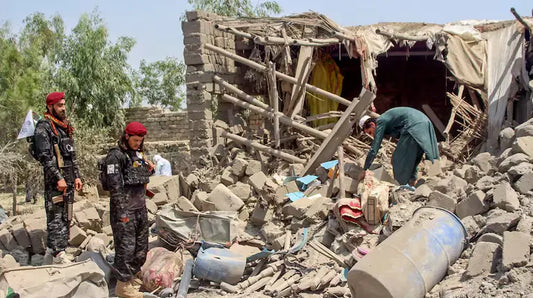Jaish-e-Mohammed Launches Women's Wing 'Jamaat-ul-Mominaat,' Led by Sadiya Azhar: Intelligence Agencies Warn of Heightened Threat

The militant organization Jaish-e-Mohammed (JeM) has inaugurated its inaugural women's division, named Jamaat-ul-Mominaat, marking a notable shift in the group's tactical operations, according to intelligence officials. This new wing will be under the leadership of Sadiya Azhar, who is the sister of JeM leader Masood Azhar.
The announcement was disseminated via JeM's Al-Qalam Media on Telegram, accompanied by promotional materials and a video that outlines the goals of this new faction. The women's wing will feature a specialized Fidayeen squad, with female members trained for suicide missions and close-combat attacks, indicating a departure from the group's previous strategy of relying exclusively on male fighters.
Sadiya Azhar took on this role after the demise of her husband, Yusuf Azhar, who was killed during Operation Sindoor on May 7, 2025, when the Indian Air Force targeted JeM's central base in Bahawalpur. Intelligence sources suggest that JeM is using personal tragedies to boost recruitment efforts for their women's wing.
Recruitment for Jamaat-ul-Mominaat apparently commenced on October 8 at the Markaz Usman-o-Ali in Bahawalpur. The recruitment strategy targets spouses of senior JeM commanders and economically disadvantaged women from religious institutions in Kotli, Manshera, Karachi, and Bahawalpur. The organization is also using social media platforms to widen their recruitment efforts.
In the aftermath of Operation Sindoor, which inflicted significant losses on JeM's personnel and infrastructure, the group has reportedly moved key training operations from Pakistan-occupied Jammu & Kashmir to Khyber Pakhtunkhwa. This region is considered safer due to its distance from the Indian border and a lower likelihood of aerial attacks. Intelligence reports also indicate that JeM is circulating false information, alleging that women were casualties in the Bahawalpur strikes, to incite emotional responses and aid recruitment.
Security agencies have identified this development as a high-priority threat, acknowledging that the involvement of women in militant roles complicates detection and counter-terrorism strategies. Female militants tend to draw less suspicion, thereby increasing the risk of hidden attacks in urban settings.
Experts caution that the establishment of Jamaat-ul-Mominaat may signify a strategic evolution in JeM's operations, facilitating more adaptable and covert terrorist activities. Indian security agencies are said to be revising and enhancing their surveillance and counter-terrorism measures to tackle the new challenge posed by female-led militant groups.



















